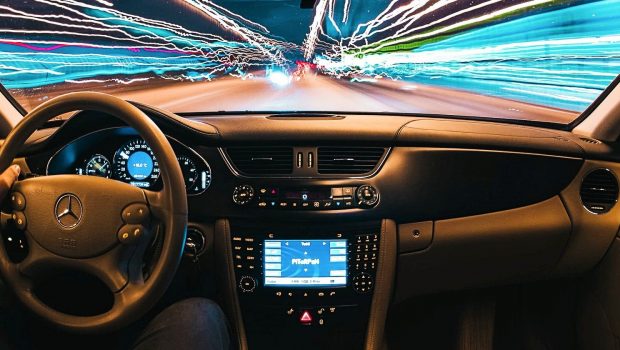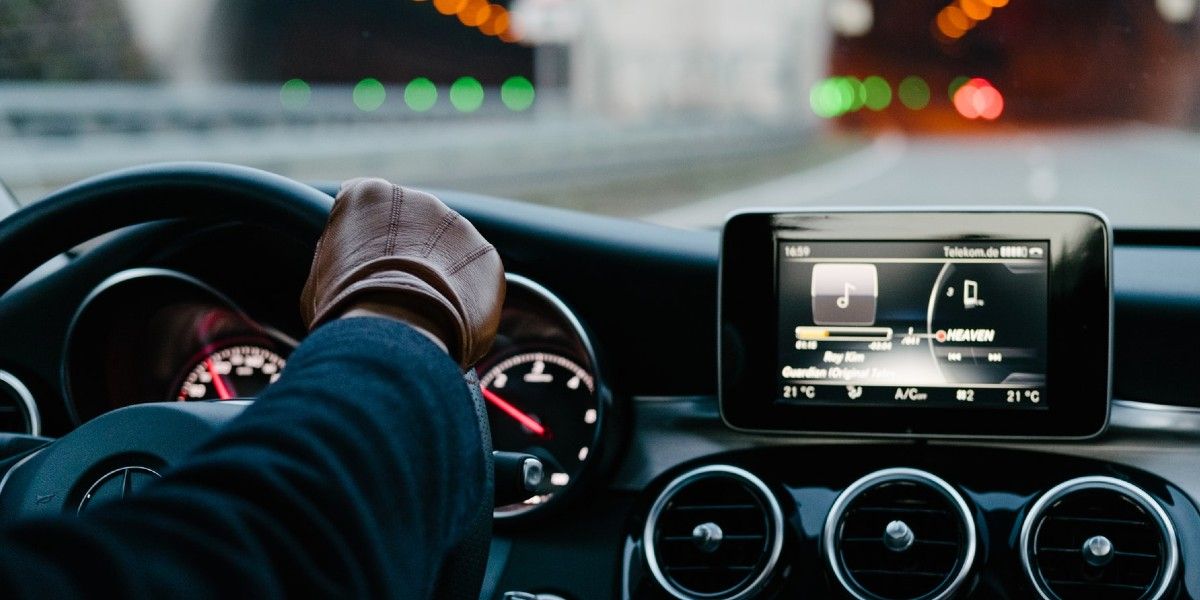Vehicle safety technology has come a long way since the late 1980s. Some safety features that we take for granted today, like seatbelts and airbags, were once technological innovations, that took years to become mandatory for all vehicles.
The next big thing in vehicle safety today is autonomous safety vehicle technology. While there is no law that demands all cars to feature this tech, most new models include it in an effort to save lives, prevent countless injuries, and bring down crash numbers.
But what are the basic features, how do they work, and how do they save lives?
The Basic Autonomous Vehicle Safety Technologies
The NHTSA — National Highway Traffic Safety Administration — revealed that approximately 42,915 people died in motor vehicle traffic crashes in 2021. With crash numbers reaching highs not seen since 2005, the NHTSA says road safety is going through a crisis.
NHTSA warns that 94% of serious crashes are directly linked to human error. New technologies could help bring those numbers down.
While Tesla is considered the leader in autonomous vehicles, many other cars have self-driving features and basic autonomous safety features come with almost all new models.
All these features are built on systems that rely on sensors or cameras that feed input data to a smart computerized system onboard a vehicle. In a sense, autonomous vehicle safety tech gives a car a sense of "awareness" of the environment with the goal of helping drivers reduce risks and dangers.
The most common autonomous vehicle safety technologies are:
- Automatic emergency braking (AEB)
- Forward collision warning (FCW)
- Blind spot warning (BSW)
- Rear cross-traffic assist (RCTA)
- Lane departure warning (LDW)
- Lane-keeping assist (LKA)
- Adaptive cruise control (ACC)
Below we'll look at each of these in turn.
1. Automatic Emergency Braking (AEB)
J.D. Power — American consumer research, data, and analytics firm — explains that AEB systems first appeared as a premium feature of luxury cars in the mid-2000s. By 2023, almost every new vehicle sold in the U.S. will come with AEB technology, thanks to an agreement between automakers and the NHTSA.
Automatic emergency braking (AEB) is a safety technology system that can predict a possible collision and respond autonomously. The system will activate the brakes of a vehicle to prevent an impact. The car will either stop completely or slow down. AEB systems require radars, cameras, or LiDAR — technology that differs from radar tech — to provide visual input that allows the system to analyze dangers and potentially life-threatening situations.
AEB has some downsides. It is not as efficient during the night, as it is during the day, usually works better at low speeds, and at high speeds it might not stop a car entirely. Different factors, for example, shadows on the road, may cause an AEB to trigger a false alert and the autonomous braking will engage.
AEB works in peak traffic and normal traffic conditions, on parking lots, urban, rural, or highway environments. Important features that are part of AEB systems include Pedestrian and Cyclist Detection and Reverse Automatic Braking.
The Insurance Institute for Highway Safety (IIHS) found that AEB systems reduced 50% of front-to-rear collisions and 56% of front-to-rear crashes with injuries. The IIHS also found that AEB systems in good light conditions reduced 27% of pedestrian crashes and 30% of injury crash rates.
2. Forward Collision Warning (FCW)
Forward Collision Warning FCW is also a technology that depends on radar, LiDAR, or cameras to operate. Unlike AEB systems, FCW technology does not take control of the car but gives out warnings to drivers. FCW systems give visual, vibration, or sound warnings, for drivers to take action in face of an imminent collision. While FCW systems alone do not brake a car, carmakers pair them with AEB systems to create more integral and mixed systems.
The warnings an FCW tech gives are designed to give drivers enough time to slow down, brake, correct course, or steer. FCW technology has also been evolving. By 2022, most systems can be adjusted to give: early, moderate, or late warnings. FCW technology also has some downsides. Because they operate with sensors or cameras, ice, snow, fog or bad weather can prevent the system from working correctly.
In 2022, Consumer Reports surveyed drivers using FCW systems on 47,000 car models 2017 to 2022. The results showed that 56% of drivers surveyed were satisfied with the FCW technology. Carmakers will often change the name of FCW technology to promote their safety features, making it sometimes confusing for a buyer.
For example, Acura calls its FCW AcuraWatch, Audi refers to it as Pre Sense front and Pre Sense city, and BMW offers it as frontal collision warning with city collision mitigation and city braking function. According to the IIHS, FCW can reduce rear-end collisions — one of the most common forms of collisions — by 27%.
3. Blind Spot Warning (BSW)
A 2022 study of IIHS found that SUVs and large vehicles often hit pedestrians while turning. In 2020, pedestrian crash deaths increased by 59%, totaling 6,500 fatalities. The same year, 54,700 pedestrians were injured in motor vehicle crashes. The IIHS linked the increase of incidents to blind spots.
A car has several blind spots: on the sides, side-rear mirrors, on the rear, and in the A-pillar sections, the structures that connect the roof to the vehicle's body. Studies show that the bigger the car is, the more blind spot areas it will have. Blind spot warning BSW systems use sensors to scan the driver's blind spot areas and warn them.
BSW warnings activate when steering, braking, or during lane change maneuvers if the blind spots are occupied by a vehicle, pedestrian, or other objects. According to a Consumer Reports survey, drivers are finding this technology useful. Of 47,000 vehicles surveyed 64% of drivers said they were satisfied blind spot warning technology.
4. Parked and In Motion Vehicle Safety
In 2016, CBS reported that 20% of all accidents happen in parking lots and garages. According to the National Safety Council, these types of incidents injure about 60,000 people and cause more than 50,000 crashes. It is common for parked drivers to be distracted, or surprised by unexpected events when driving in reverse. A rear cross-traffic alert (RCTA) uses sensors or cameras to check the rear part of the vehicle and its sides when a car reverses.
On the other hand, lane departure warning (LDW) systems are key to saving lives when cars are in motion. They are designed to alert a driver that they are drifting out of their lane without a turn signal. An LDW will not take control of the vehicle, but it can be paired with other safety technology to brake or correct course.
Studies show that LDW systems can reduce 11% of all crashes, and reduce injuries by 21%. LDW cameras are usually mounted on the windshield near the rearview mirror. The camera will monitor the lane markings of a highway or road. Car brands offer different variations for LDW systems. For example, LKA, short for lane-keeping assist (LKA) and lane centering assist (LCA), can take control of the car, steer, or brake.
If you get a notification on your dashboard that reads; Lane keeping assist inoperative, Lane keeping system malfunction, Lane departure warning not working, or Calibrate lane departure warning, the LDW system needs to be checked by a professional for recalibration.
5. Adaptive Cruise Control (ACC)
Adaptive cruise control (ACC) is the general name given to complex safety systems that are designed to maintain a safe following distance. The speed of the vehicle is automatically adjusted when ACC is engaged. You might have heard about ACC systems under a different name. It is sometimes called; Active cruise control, Dynamic cruise control, Radar cruise control, Automatic cruise control, Intelligent cruise control, and other terms depending on the brand of a vehicle.
ACC also uses sensory data recollected by cameras, lasers, radar, or LiDAR hardware installed on a car. ACC has been called "the future of car intelligence" due to its more advanced functions.
Pros and Cons of Autonomous Vehicle Safety
The benefits that automotive vehicle safety technology brings to the table are straightforward: a dramatic reduction of accidents, incidents, deaths, and injuries. Another benefit of autonomous vehicle safety is the potential to maximize traffic flows and declutter highways and roads.
Despite all the benefits, autonomous vehicle safety technology are still in the early stages of development. Due to their high reliance on sensors, weather events and other factors may cause the systems to malfunction. On the other hand, recalls due to software bugs are also becoming increasingly common. Finally, some experts argue that drivers are becoming overconfident regarding the ability their car has to autonomously prevent an accident.
Drivers should always remember that no matter how advanced an autonomous vehicle safety system is, drivers are required to stay alert and ready to intervene and take action at all times.












Gloss